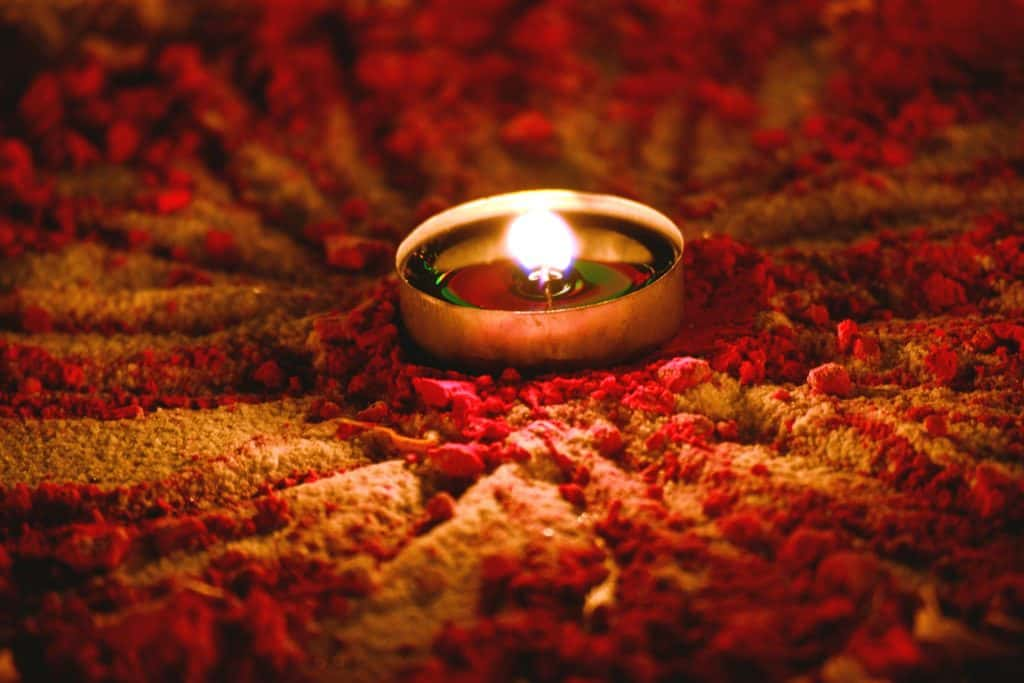Diwali is just around the corner, and celebrations are already in full swing! This much-loved Festival of Lights is celebrated to mark the return of Lord Ram, Sita and Laxmana to Ayodhya, after having been in exile for fourteen long years. To welcome them back, the streets of Ayodhya were lined with hundreds of twinkling lamps and people joyously burst firecrackers and distributed sweets.
And thousands of years later, this is pretty much how Diwali is celebrated even today! Except for the crackers, of course—those who believe in going green have toned down this part of the celebration. During Diwali, we decorate our homes and get together with family and friends at fun-filled parties and festive dinners. Home décor takes centrestage, with each home trying to outshine the next with rows upon rows of diyas and gaily decorated rangolis right at the doorstep.
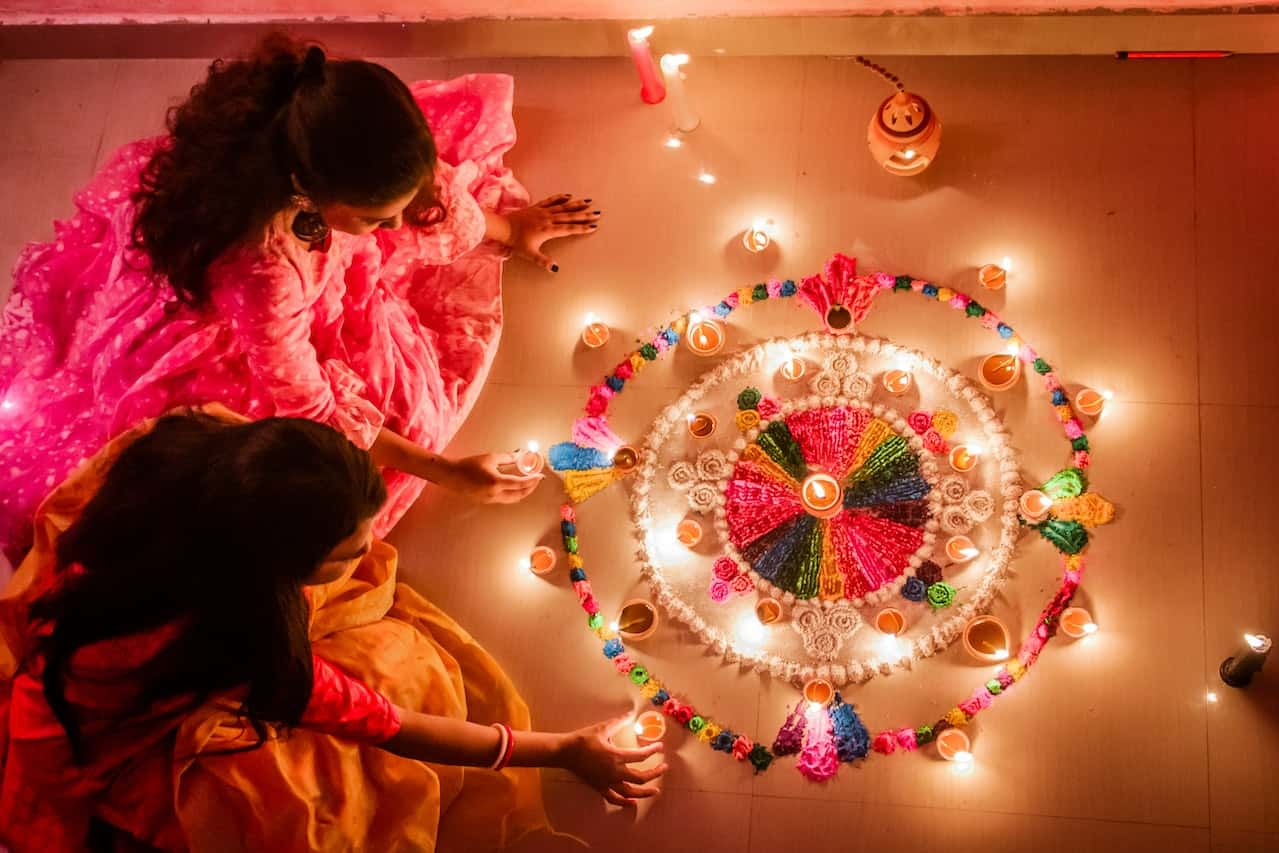
Rangoli designs are a quintessential part of the Diwali decorations in every Indian house.
If you’re looking for rangoli designs for Diwali, you’re at the right place! From floral designs to rangolis made of coloured powders, glitter and glue, we’ve put together ideas, how tos and tips to help you with your festive celebrations!
First, let’s begin with an introduction to rangoli designs for Diwali. What are they, and what do they signify?
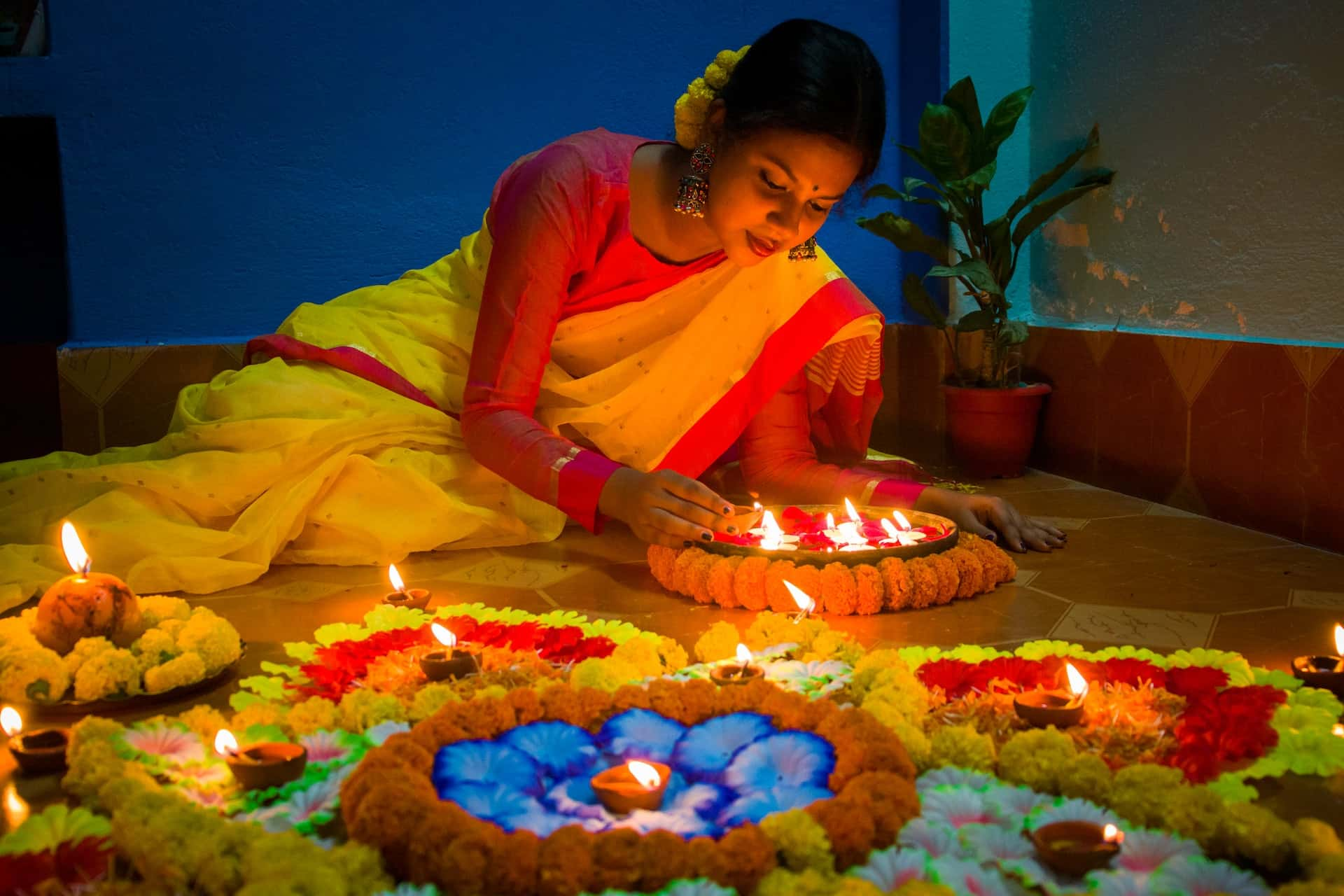
Rangoli Designs for Diwali: What are Rangolis All About?
The rangoli takes different forms in various states in India. Variously named as Kolam in Tamil Nadu, Chaook in Chhatisgarh, Madanae in Rajasthan, Chowkpurna in Northern India, Alpana in Bengal, and Muggu in Andhra Pradesh, rangoli art is an intrinsic part of the very fabric of Indian culture.
The practice of creating rangolis can be described as a traditional folk art in which colourful and artistic patterns are created on the floor in living rooms or verandas using materials such as flower petals, rice paste, colored rice, dry flour, and so on. Each state has its own traditional patterns and practices, which have evolved over the years.
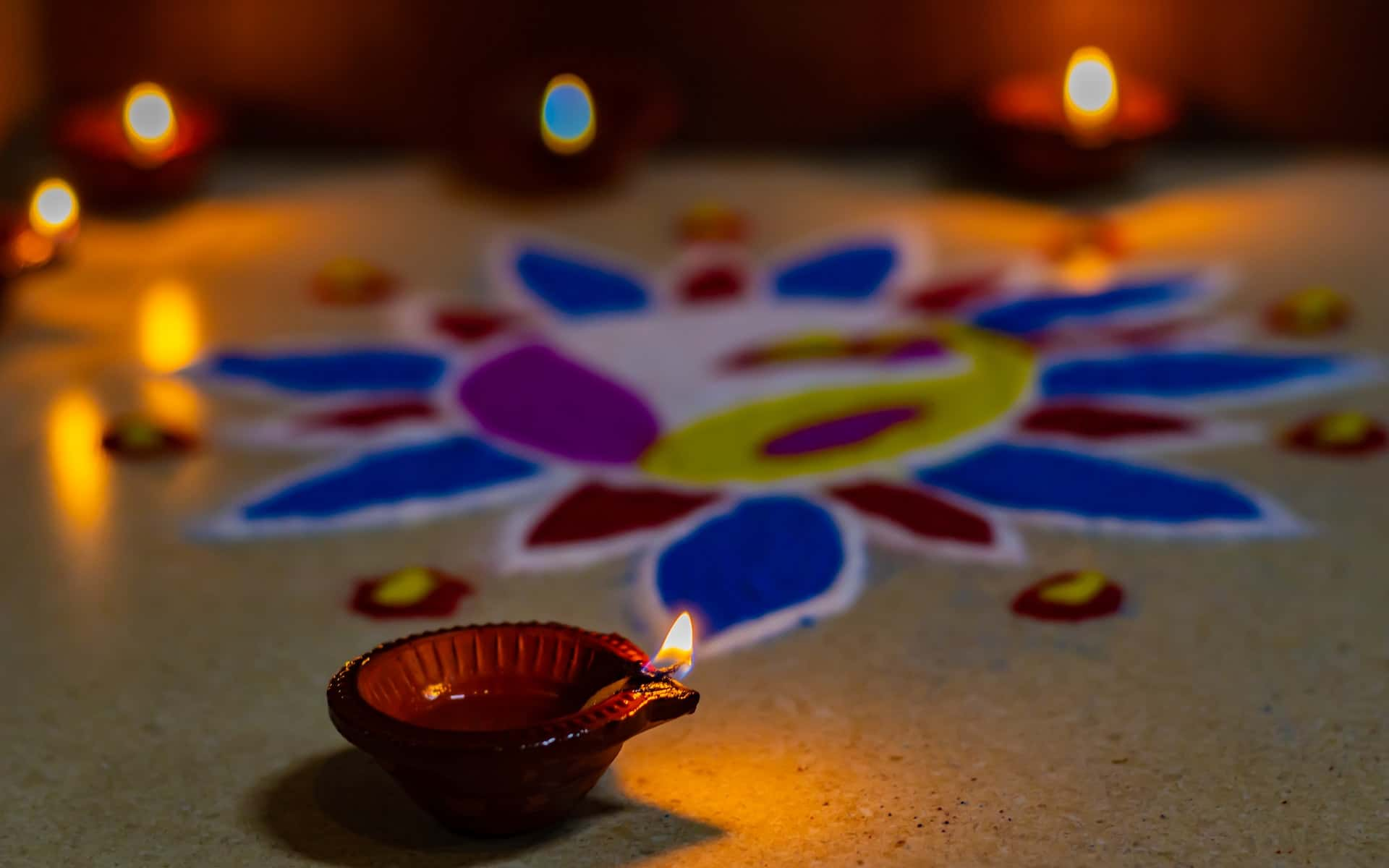
Rangoli Designs for Diwali: Practices and Traditions
While the rangoli is drawn on the freshly washed floor every single morning in some cultures, it assumes greater significance during the celebration of Hindu festivals like Diwali. Rangoli designs for Diwali are considered to be sacred, and are drawn at the threshold of homes to welcome the Goddess Lakshmi; who, it is believed, will shower prosperity and abundance on those who worship her.
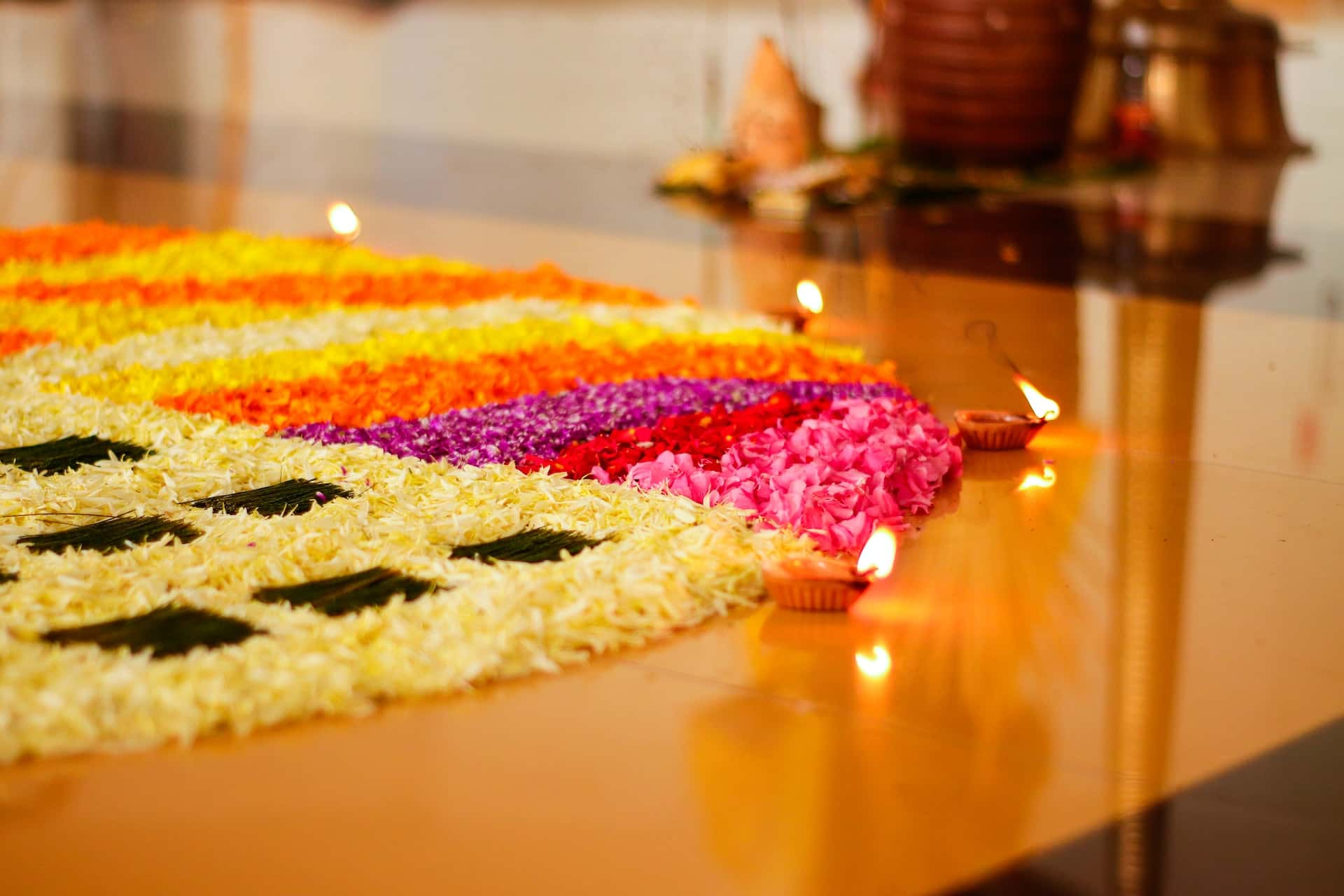
A gaily decorated Pooja thali is a customary part of the Lakshmi Pooja during Diwali celebrations. This is a metal plate that contains pooja items, such as camphor, coconuts, haldi and kumkum, flowers, incense, diyas, fruit or sweets, and gold and silver coins. The thali is beautifully embellished with rangoli designs before all these items are placed on it. It is often lined in velvet and edged with mirrors, ribbons and lace to make it colourful and unique.
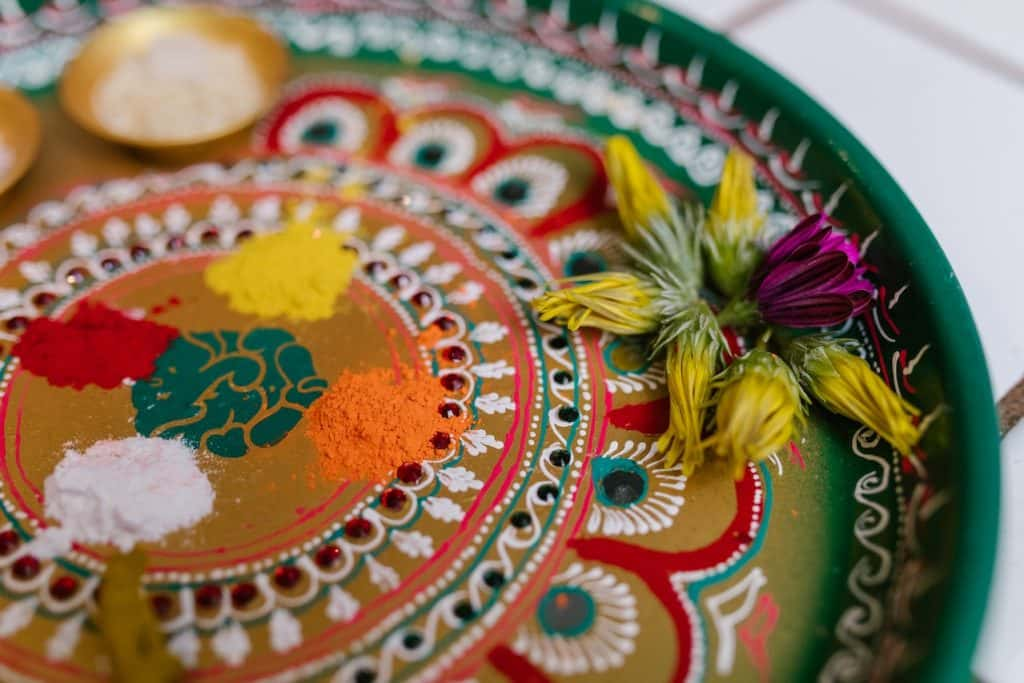
There are many traditional Rangoli designs that have been passed down from mother to daughter down the ages, and these are still in use today. However, there’s no limit to how creative you can get, and fresh and innovative new rangoli designs for Diwali are created every year.
What is the Significance Behind Rangoli Designs for Diwali?
Rangolis were not only used to decorate the home, but they were also said to ward off evil and prevent any negativity from crossing over into the home. It is usually the women of the house who decorate the homes using rangoli designs for Diwali. Not only are rangolis an integral part of Diwali festivities, but they are also used to adorn houses during any other auspicious occasion such as a marriage, housewarming or any other religious event where people gather together to celebrate the occasion.
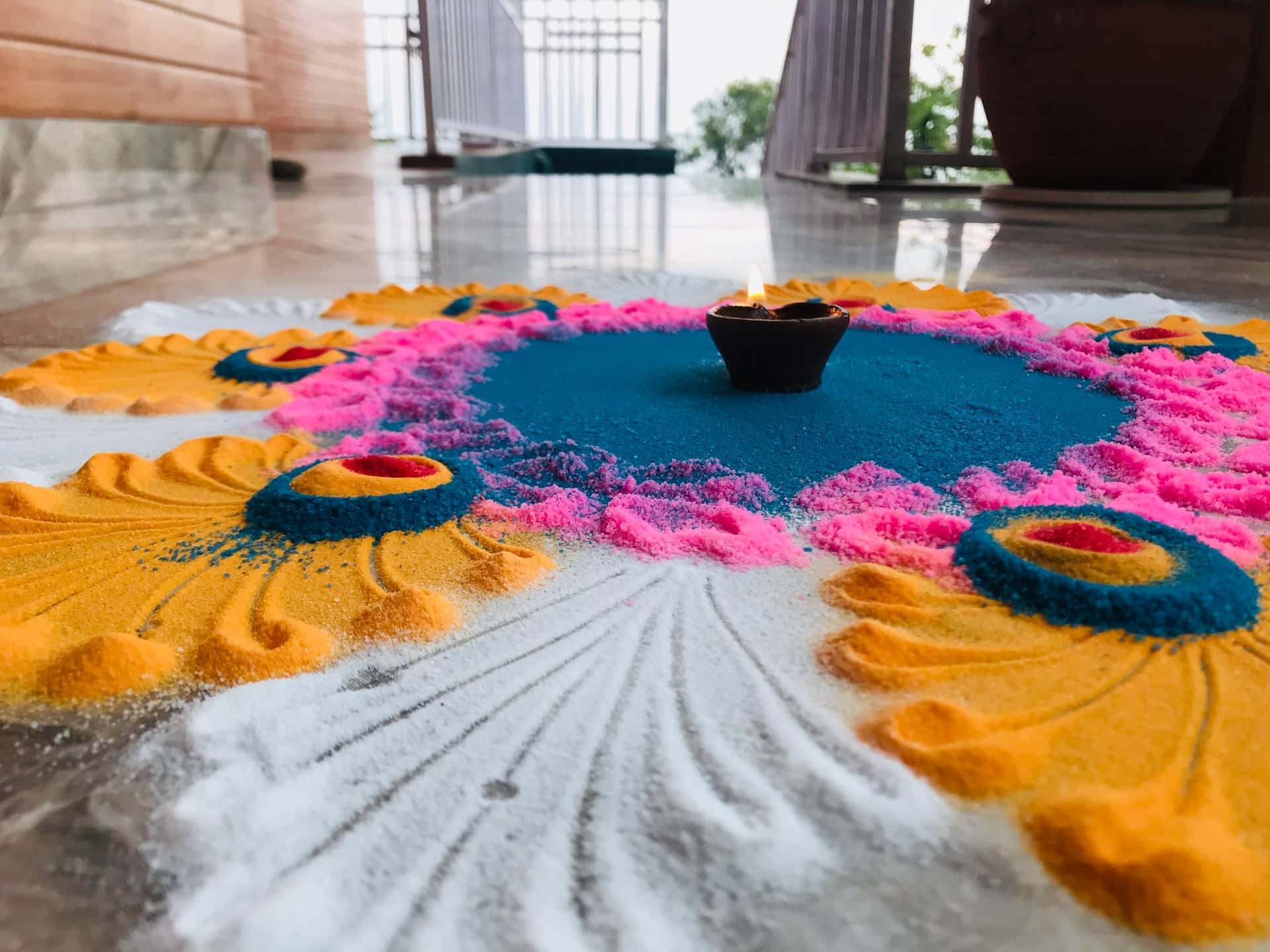
Types of Rangoli Designs for Diwali in Each State
Each culture has their own hand-me-down practices for creating rangolis. The depictions of art forms in each part of India may vary, as they represent the folk stories and religious traditions that are followed in that part of the country.
Some states may create rangolis using flowing and continuous lines that join dots placed in a rhythmic pattern, while other states might give more importance to depicting animals like the peacock, images of the sun and stars, deities, shapes of flowers or geometric patterns. Some rangolis are very elaborate and large; so much so that several people are needed to take up the creation of each small section!
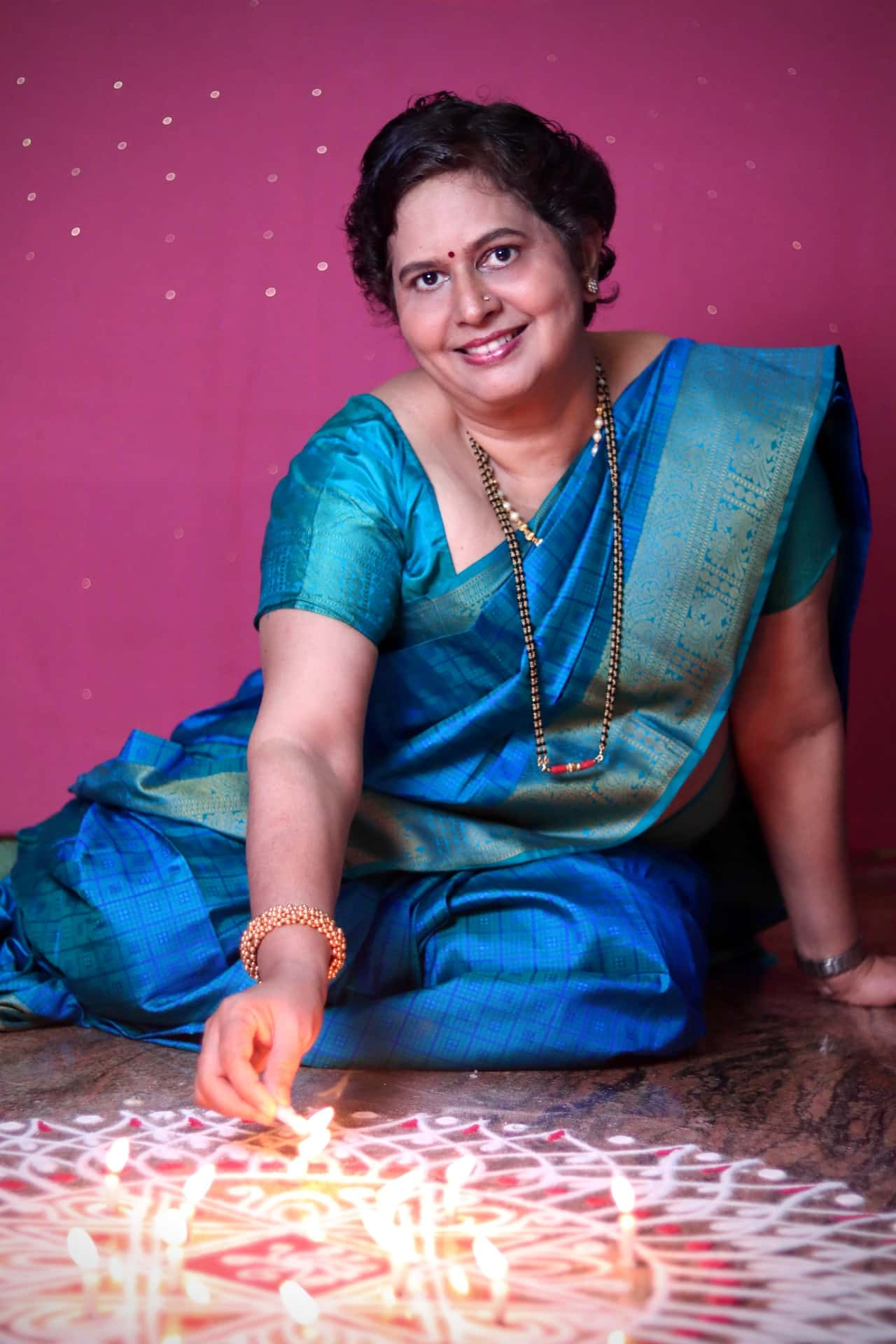
The Symbolism Behind Rangoli Designs for Diwali
The rangoli occupies an important place in the practice of Hindu religious festivities. It is a symbol of the renewal of life, and the impermanence of all that is. Every day, the rangoli drawn the previous day is washed away and a fresh new pattern is created. This shows us that each morning holds the hope of a new day, and we can start all over again with new and prosperous beginnings. The rangoli can, in this way, be said to symbolise the eternal permanence of the soul, even as life itself is impermanent.
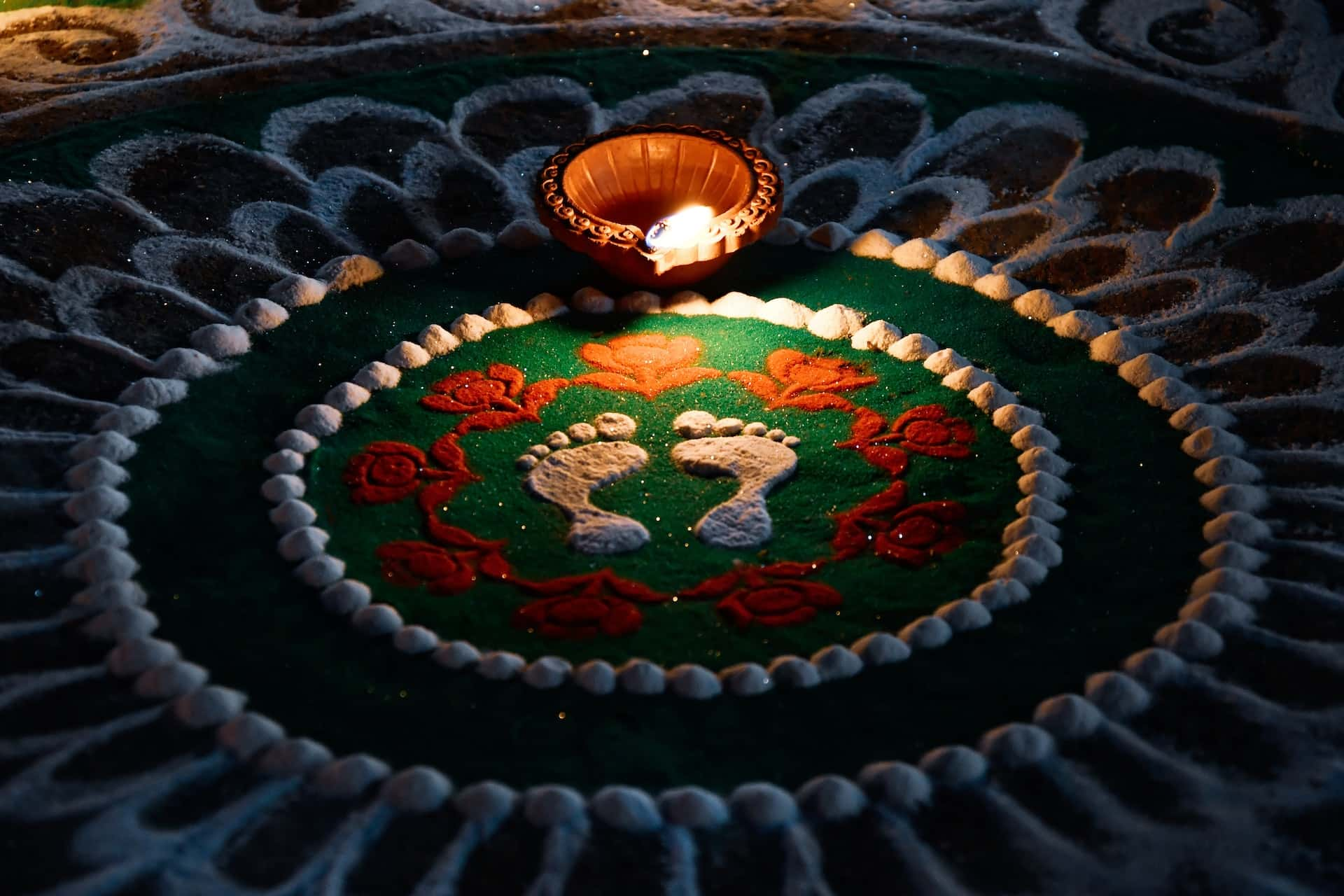
When creating rangoli designs for Diwali, symbols of Goddess Lakshmi, the lotus flower, swastika and so on are common designs used. These designs are indicative of prosperity, good vibes and happiness. They are created right at the doorstep and in front of the pooja, and usher in an abundance of all kinds of positivity into the house.
How are Rangoli Designs for Diwali Created?
Trying your hand at a rangoli for the first time? Here are the steps to follow to make a rangoli design for Diwali.
- Pick the design you want to use. You can even create your own design. Readymade stencils are available in various sizes that are very easy to use, even if you don’t have an artistic hand!
- Wash, clean and dry the surface where you will be applying the rangoli.
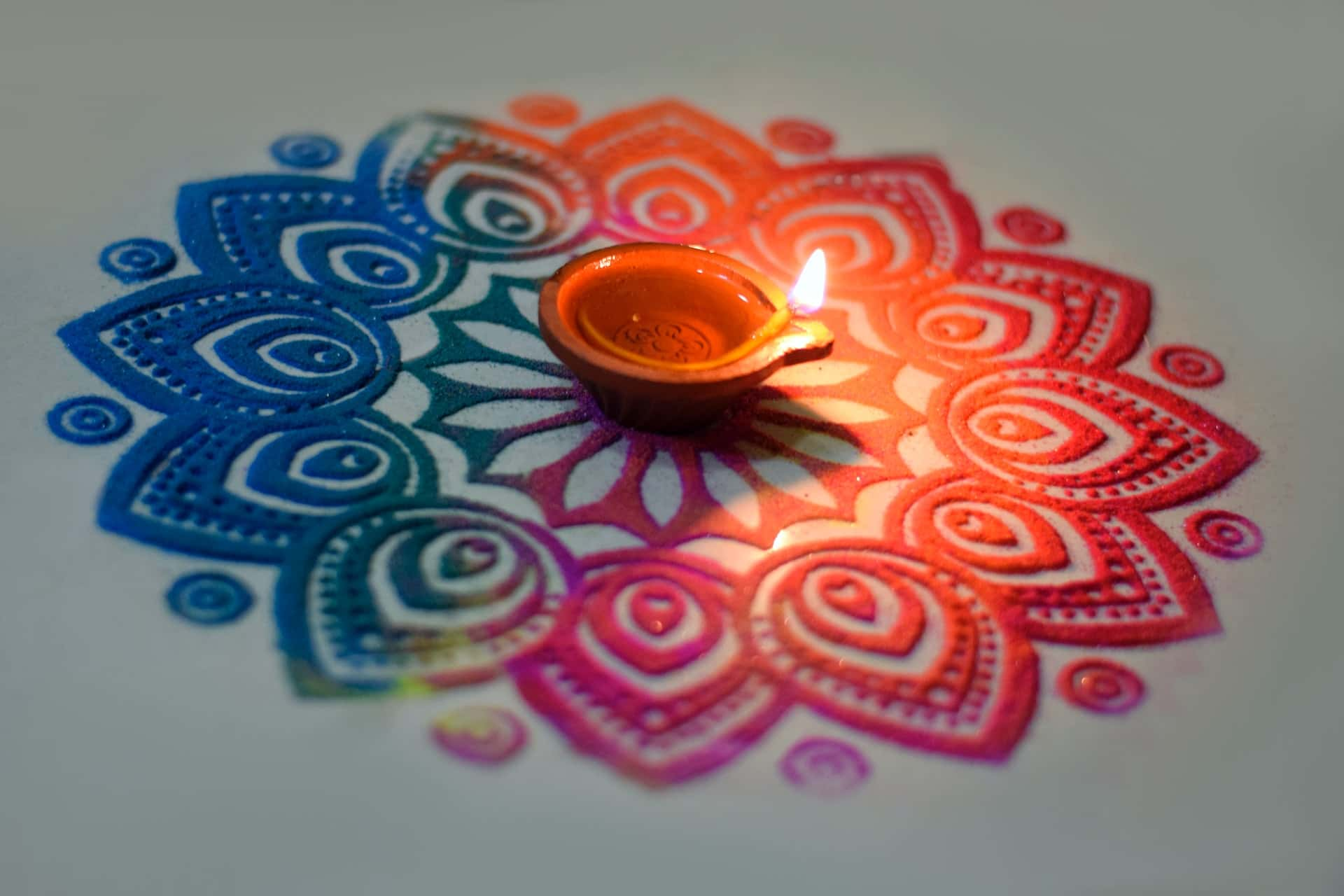
- Draw or stencil your design outline in chalk on the floor. Keep a damp cloth handy, if you need to erase any mistakes.
- Fill a cone with white chalk powder and snip off the pointed edge so that the chalk flows out. Use your finger to control the flow, and outline your design with the powder. You can choose coloured flour or any other coloured rangoli powder instead of chalk.
- Fill in the design using materials of your choice. You can use flowers or petals for some of the sections and fill the rest with coloured rangoli powder. You can even use pulses or grains of rice.
- Do not leave any empty spaces; every segment must be completely filled in.
- When creating rangoli designs for Diwali, you can use diya motifs or draw lamps to signify the Festival of Light.
Modern Rangoli Designs for Diwali
While traditional designs were made using coloured powders, flowers and grains, the sky is the limit to your creativity! You can think out-of-the-box and create patterns using mirrors, glass tiles, fabric, beads or acrylic paint on ceramic tiles. You can even think of floating flowers and tea light candles inside a large brass vessel filled with water, for a very unique kind of ‘floating’ rangoli!
We love the way this artist has arranged diyas in a symmetrical pattern and created a rangoli all around, with the diyas as the focus. Bright marigold petals, jasmine and rose flowers are used to create a circular pattern that looks like the whorls of a flower.
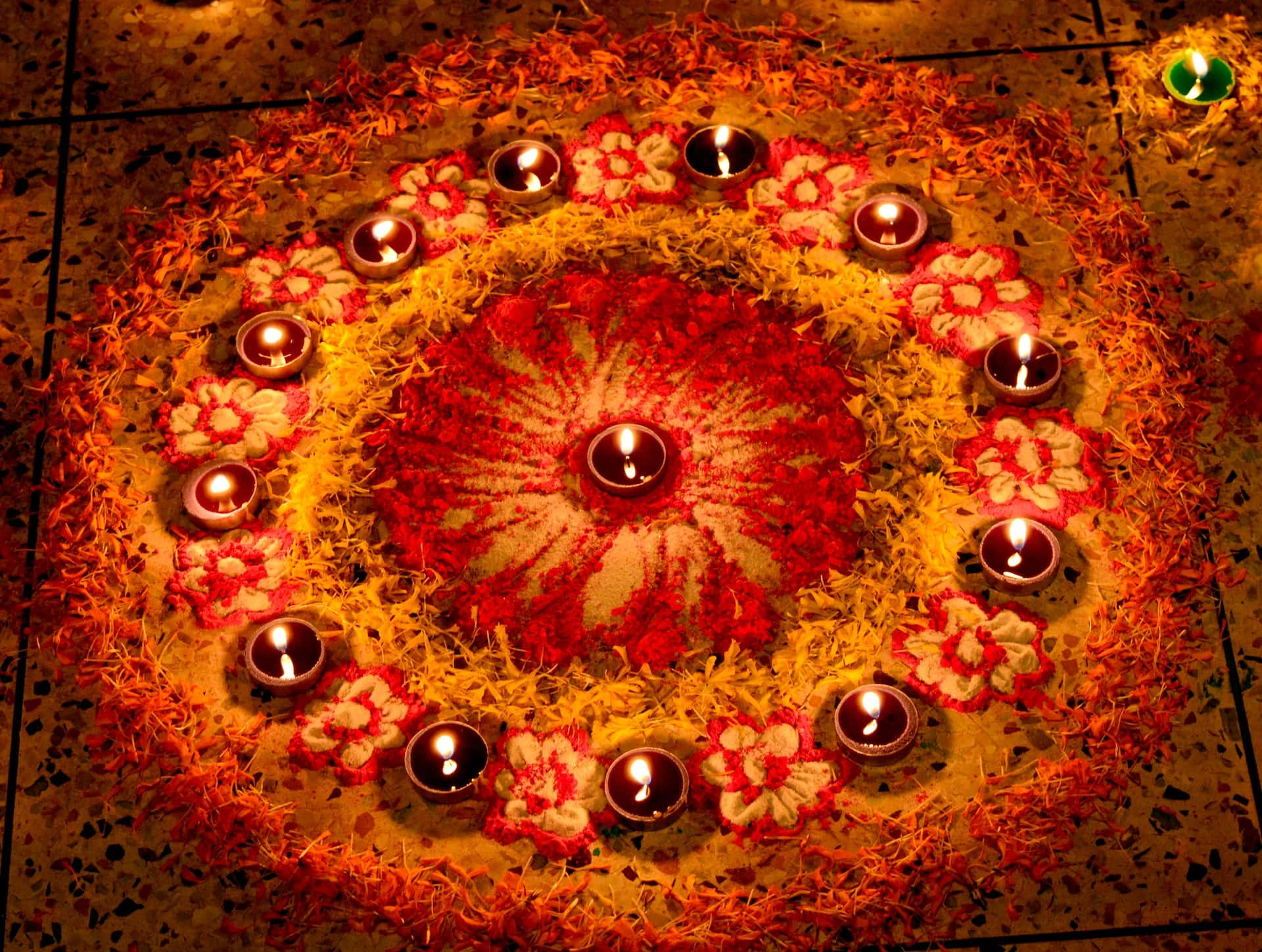
Happy Diwali to You and Yours!
Diwali, the Festival of Light, celebrates the triumph of light over darkness and good over evil. This is a metaphor; ‘darkness’ representing ignorance, and ‘light’ being the light of inner knowledge. Poojas and prayers are conducted to light the lamp of spiritual knowledge. Across the nation, people get together with loved ones, exchanging gifts, food hampers with delectable delicacies, and mouth-watering special sweets.
It’s the time of year when homes are decluttered, given a rigorous spring clean and adorned with a fresh coat of paint. Living room designs are upgraded to welcome guests, and the entire home is decorated with diyas, tiny electric lamps, fairy lights, marigold festoons and colourful torans. Lakshmi Pooja and Ganesh Pooja are conducted to seek the blessings of the divine and remove all traces of negativity from the home.
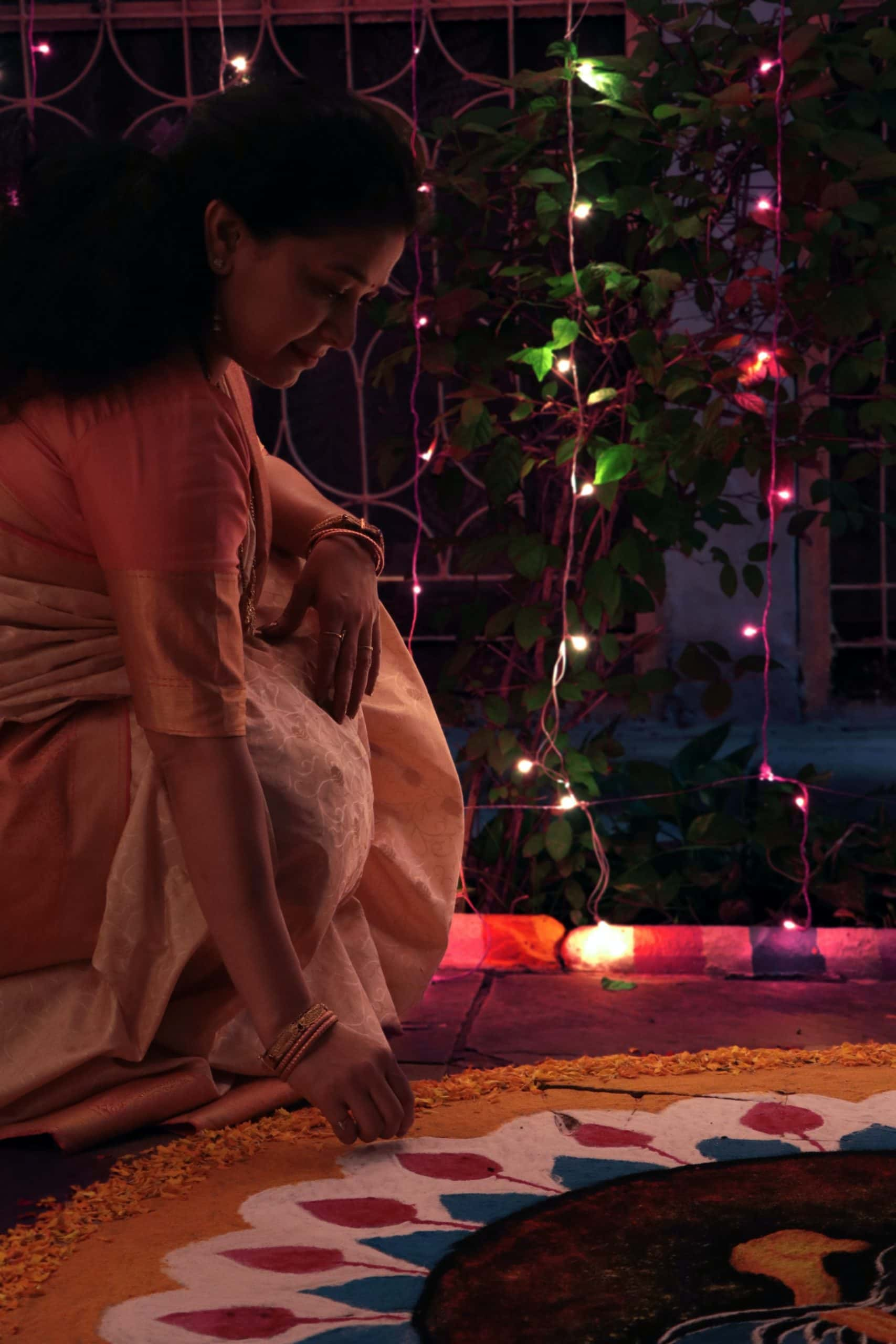
A Last Word
So now that you have plenty of easy rangoli designs for Diwali to choose from, it’s time to get started! And if you need a helping hand with upgrading your home décor in time for Diwali, you know whom to turn to.
Whether you’re looking for something small like a fresh coat of paint for your living room, or you’d like to refurbish your entire home and give your décor a facelift, we’ve got teams who are ready to help. Just give HomeLane a call today.
From the HomeLane family to yours, we wish you all the love and light in the world, and may happiness and prosperity be yours! Here’s wishing you a joyous Diwali.
FAQs
1. What are rangoli designs for Diwali?
In traditional Indian homes, it is believed that decorating the house with rangoli designs ushers in prosperity and good luck and protects the family from ill-health or negativity the rest of the year. Especially during festival celebrations, rangolis are considered very auspicious.
As Diwali is considered to be the ‘festival of Light’, families will go to any lengths to decorate homes and offices with flowers, torans, and rows of twinkling diyas, candles or oil lamps to welcome the Goddess Lakshmi to their homes. Beautiful rangoli designs for Diwali are created at the doorstep and entrance to the home, to honour the Goddess of prosperity in the hope that she will bestow her blessings on the family through the coming year.
The rangolis that are created are intricate and complex, in the belief that if any negativity is present, it will get caught in the whorls of the design and will stay outside the house without entering. Typical patterns used for Diwali include images of the Goddess Lakshmi, floral designs, and patterns created using diyas, candles and lamps, and peacocks. Small earthenware diyas are often placed in a symmetrical pattern all around or at the centre of these rangolis.
2. What are the two types of rangoli?
There are two ways to create rangolis; one is using dry materials, such as brightly coloured rangoli powder, chalk powder, coloured grains of rice, flower petals and so on.
The second type of Rangoli, which is more common in South India, is a ‘wet’ rangoli, which is created by grinding soaked rice into a fine paste, and allowing the liquid to flow through your fingers to create intricate patterns that are worked around a series of dots. Once the rice paste dries, it brightens up to form a simple white rangoli called a Kolam. The creation of kolams is an art that is passed down through generations, and it requires finesse and practice to get it right.
3. What is a rangoli pattern for kids?
Rangolis represent a traditional artform that is a deep-rooted part of Indian culture. Today, many children have a lack of interest in their own culture, and prefer to ignore age-old customs and traditions that have been followed by their families for generations.
We should encourage our children to learn to create rangolis, as it not only keeps them in touch with their roots but also teaches them the habits of patience and consistency. Simple geometric mandala patterns can be created by your little ones, and you can let them try colouring the segments with coloured chalk, flower petals, leaves or grains of rice. Fill the materials in paper cones with the pointed corner snipped out, and allow your little ones to have fun exploring their creativity!

